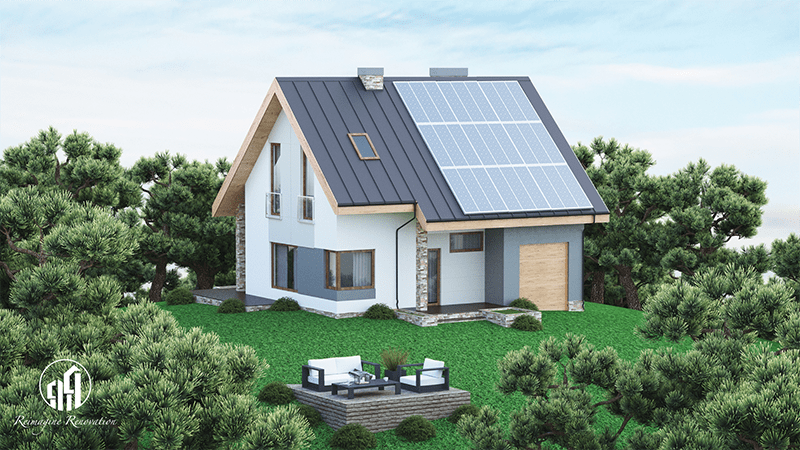In recent years, the concept of green remodeling has gained significant traction among homeowners and builders alike. As concerns about climate change and environmental degradation continue to rise, more people are looking for ways to make their homes not only more beautiful but also more sustainable. This blog post will delve into the meaning of green remodeling, its benefits, and how it can be achieved.
Understanding Green Remodeling
Green remodeling refers to the process of renovating or improving a home in a way that minimizes its environmental impact. This approach considers various factors such as energy efficiency, resource conservation, and indoor air quality. The goal is to create a living space that is not only aesthetically pleasing but also environmentally friendly.
Environmental remodeling focuses on using sustainable materials and practices that reduce waste and energy consumption. It encompasses everything from choosing eco-friendly building materials to implementing energy-efficient systems. By prioritizing sustainability in home renovations, homeowners can significantly reduce their carbon footprint while enhancing their living environment.
The Benefits of Green Remodeling
1. Environmental Impact
One of the primary motivations behind green remodeling is its positive impact on the environment. Traditional construction methods often lead to excessive waste and pollution. In contrast, eco-friendly remodeling emphasizes recycling materials, reducing waste, and utilizing renewable resources. By adopting these practices, homeowners can contribute to a healthier planet.
2. Energy Efficiency
Energy efficiency is a cornerstone of green remodeling. By upgrading insulation, windows, and HVAC systems, homeowners can reduce their energy consumption significantly. This not only lowers utility bills but also decreases reliance on fossil fuels, further contributing to environmental sustainability.
3. Improved Indoor Air Quality
Many conventional building materials release volatile organic compounds (VOCs) that can harm indoor air quality. Green remodeling prioritizes the use of low-VOC paints, finishes, and materials that promote healthier living environments. Improved indoor air quality can lead to better health outcomes for residents by reducing allergens and toxins in the home.
4. Increased Home Value
Investing in green remodeling can enhance property value over time. Homes equipped with energy-efficient appliances and sustainable features are increasingly attractive to buyers who prioritize eco-friendliness in their purchasing decisions. As awareness around climate issues grows, properties with green upgrades may command higher prices on the market.
5. Long-Term Savings
While some eco-friendly upgrades may require an initial investment, they often lead to long-term savings through reduced utility costs and maintenance expenses. For example, installing solar panels or energy-efficient appliances may have higher upfront costs but will pay off over time through lower bills.
Key Elements of Eco-Friendly Remodeling
To achieve successful green remodeling results, several key elements should be considered:
Sustainable Materials
Using sustainable materials is crucial in any environmental remodeling project. Look for products made from recycled or rapidly renewable resources such as bamboo flooring or reclaimed wood cabinetry. These choices not only minimize waste but also add unique character to your home.
Energy-Efficient Systems
Incorporating energy-efficient systems into your remodel is essential for reducing overall energy consumption. Consider installing high-efficiency heating and cooling systems (HVAC), LED lighting fixtures, or smart thermostats that optimize energy use based on occupancy patterns.
Water Conservation Techniques
Water conservation should also be a priority during any remodel project; consider installing low-flow faucets and showerheads or rainwater harvesting systems that collect rainwater for irrigation purposes.
Proper Insulation
Proper insulation plays an important role in maintaining comfortable temperatures within your home while minimizing heating/cooling costs; consider using spray foam insulation or cellulose made from recycled paper products as part of your renovation plan!
Steps Toward Successful Green Remodeling
If you’re considering embarking on an eco-friendly remodeling journey yourself here are some steps you might follow:
- Assess Your Current Space: Identify areas where improvements could be made regarding efficiency or sustainability.
- Set Clear Goals: Determine what you want out of this renovation—whether it’s increased comfort levels reduced utility bills etc.—and keep those goals at forefront throughout process.
- Research Sustainable Options: Investigate available sustainable material choices as well as local contractors specializing in green building practices.
- Create A Budget: Factor potential savings into the overall budget so you know how much money will need to be allocated towards various aspects of the renovation project.
- Hire Professionals: Seek out contractors experienced with environmentally friendly practices who understand the importance of incorporating these elements into designs effectively.
Green remodeling represents an exciting opportunity for homeowners looking to enhance both their living spaces while making positive contributions towards preserving our planet! By focusing on sustainable materials, energy-efficient systems, and improved indoor air quality—and taking actionable steps toward achieving these goals—you’ll experience benefits that go far beyond aesthetics. Whether you’re planning a small update or a major overhaul, embracing the principles of eco-friendly renovations will undoubtedly bring rewarding results for both now and future generations! Book a free discovery call today!

